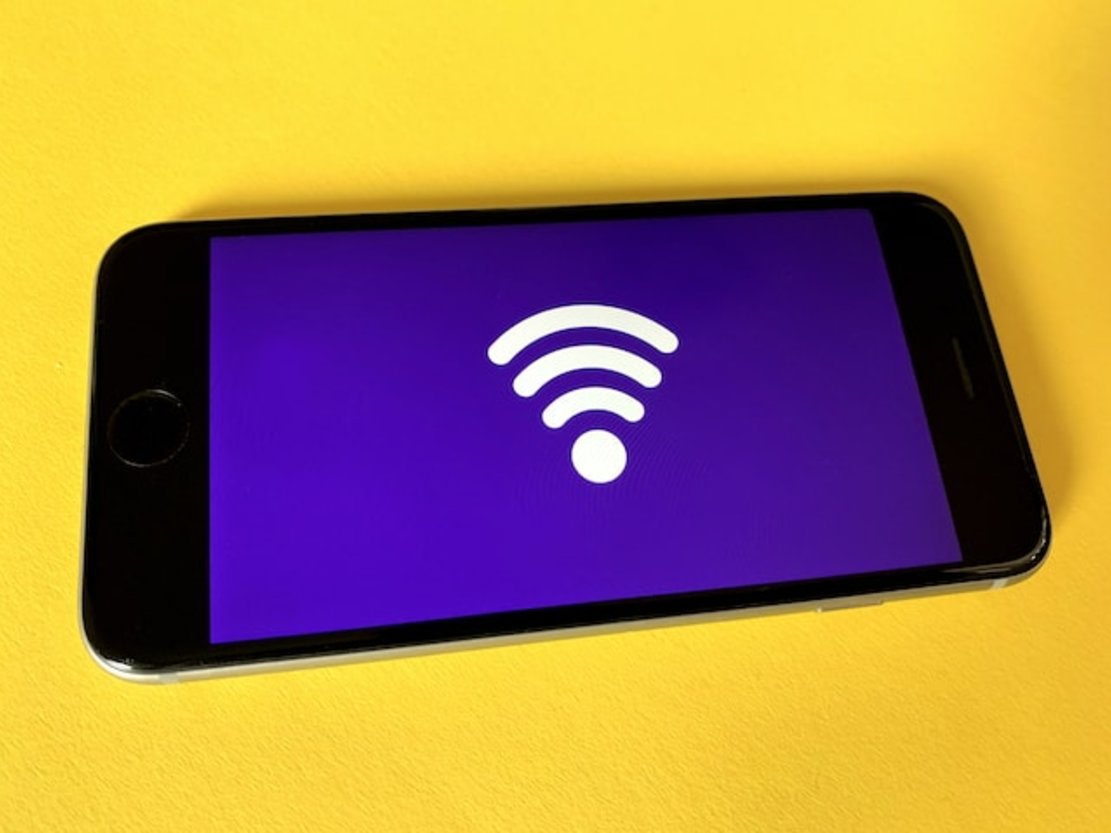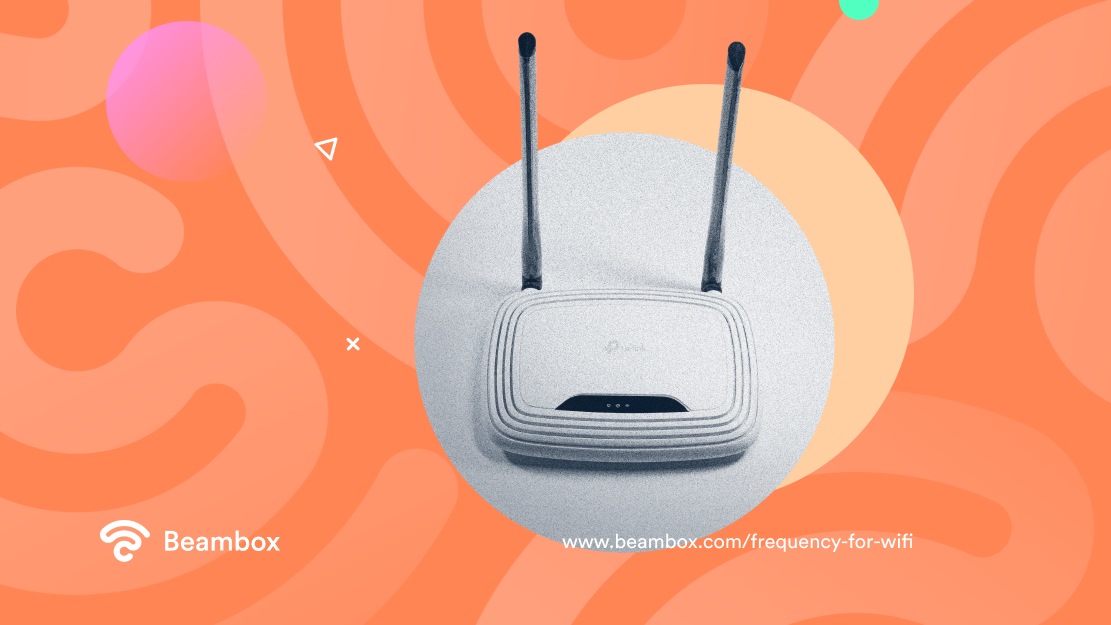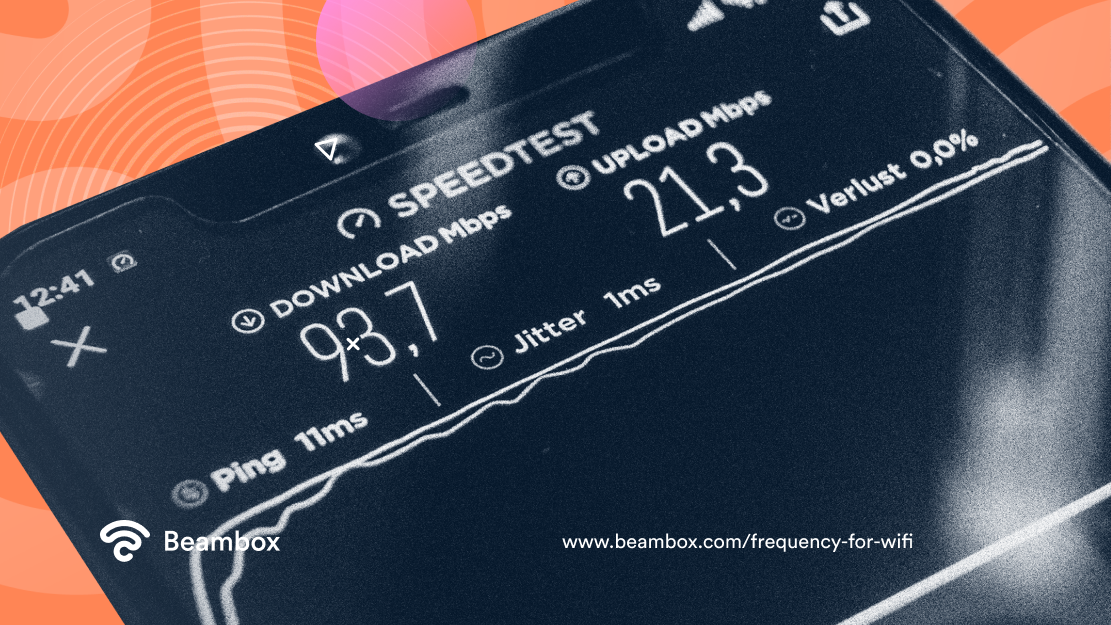As a business, having a reliable and high-speed wifi connection is essential to make your customers happy. Understanding the basics of frequency for WiFi is valuable for business owners looking to optimize the customer experience.
This article will teach you everything you need to know about WiFi frequencies. Moreover, you will get a few tips to improve your internet performance. Let’s get started.

What is WiFi Frequency?
Are you wondering what is WiFi frequency? It’s a specific band frequency within a WiFi band used for wireless networking. WiFi frequencies allow computers, smartphones, and other devices to connect to the internet wirelessly.
Invented in the late 1970s, WiFi’s popularity gained movement in the 1990s when it became widely available to consumers. 802.11a was the first WiFi standard approved in 1997. Since then, there have been several updates to the WiFi standard, including 802.11b, 802.11g, and 802.11n.
WiFi operates mainly in the 2.4 GHz and 5 GHz bands. These are both portions of the radio frequency spectrum that is allocated for use by WiFi and other wireless technologies.
Within these bands, multiple frequencies can transmit data over a WiFi network. For example, one band divided into multiple frequencies is the 2.4 GHz band. These frequencies include 2.412 GHz, 2.432 GHz, and 2.457 GHz. Each of these frequencies can transmit data and affect the range and speed of the WiFi connection.

WiFi Frequency and Bands: What’s the Difference?
People use the terms WiFi frequency and bands interchangeably. However, they are different concepts that are important to understand.
WiFi bands refer to the specific portions of the radio frequency spectrum used for WiFi networking. There are different WiFi bands. These include the 2.4 GHz band, the 5 GHz band, the 3.6 GHz band, and the 60 GHz band.
WiFi frequency refers to the specific frequency within a WiFi band used to transmit data.
To summarize, a WiFi band is a broad portion of the radio frequency spectrum used for wireless networking. In contrast, WiFi frequency is a specific frequency within that band used to transmit data.

Which Are the Most Used WiFi Frequencies?
The most widely used WiFi frequencies are the 2.4 GHz or 5 GHz bands. The 2.4 GHz band is the original WiFi frequency band. Device manufacturers primarily use it because it has a longer wavelength that covers large areas to provide more reliable connectivity. It can also pass through solid objects like walls.
The 5 GHz band is less crowded and can provide faster speeds. However, it struggles in congested environments.
In addition to the 2.4 GHz and 5 GHz bands, there are also other frequency bands. However, users operate them only in particular situations due to their properties. For example, the 3.6 GHz band and the 60 GHz band.
Let’s dive deeper into the two most common frequency bands for WiFi: 2.4 GHz and 5 GHz.
WiFi Frequency: The 2.4GHZ Band
The 2.4 GHz band is the most common WiFi frequency. As briefly mentioned, one of the main advantages of the 2.4 GHz band is its longer wavelength. This long wavelength penetrates walls and other solid objects. It also makes the 2.4 GHz band the go-to frequency for WiFi. Enterprises predominantly use the 2.4 GHz band for implementing their internet connection.
However, the 2.4 GHz band is more crowded than the 5 GHz band. This congestion leads to interference from other devices and networks. As a result, you might see slower speeds and less reliable connections.
WiFi Frequency: The 5 GHZ Bands
The 5 GHz band is the second most common WiFi frequency. It has more channels than 2.4 GHz, each 20, 40, 80, or 160 MHz wide.
The 5 GHz band is typically less crowded than the 2.4 GHz band. This situation leads to faster speeds and more solid connections. It’s the best choice for those scenarios where you need a high bandwidth connection, like video streaming or online gaming.
However, the 5 GHz band has a shorter wavelength than the 2.4 GHz band. Therefore it’s hard to get a strong signal in some situations, especially if you do not use a WiFi extender.

How to Change WiFi Frequency
To simplify things, frequencies are relabeled to channels, and each frequency has a channel number. If you’re wondering how to change WiFi frequency, you can do so by choosing a different channel. WiFi channels differ based on whether you are on the 2.4 GHz or 5 GHz band. Here’s a breakdown of the channels offered to users based on which band you use.
WiFi Frequency Range: 2.4 GHz Channels
You need to try a few channels to find the best one for 2.4 GHz frequency. You must also check various WiFi frequency channels to see which works best. Moreover, using a WiFi analyzer app to quickly verify which channels are not congested would be helpful.
There are 11 channels in the 2.4 GHz WiFi frequency range. Each channel is 20 MHz wide. The channels are:
- 2.412 GHz
- 2.417 GHz
- 2.422 GHz
- 2.427 GHz
- 2.432 GHz
- 2.437 GHz
- 2.442 GHz
- 2.447 GHz
- 2.452 GHz
- 2.457 GHz
- 2.462 GHz
On average, the least congested channels are 1, 6, and 11. However, it might depend on your location.
WiFi Frequency Range: 5 GHz Channels
The WiFi Frequency range for 5GHz frequency depends on your environment. If you have a lot of other 5GHz WiFi networks in your area, choose a less crowded channel. Like a 2.4 GHz frequency, use a WiFi analyzer tool to see which channels serve you best.
The channels for 5 GHz WiFi varies depending on the region. In the United States, there are 18 non-overlapping channels. These channels are:
- 36
- 40
- 44
- 48
- 52
- 56
- 60
- 64
- 100
- 104
- 108
- 112
- 116
- 120
- 124
- 128
- 132
- 136
Be sure to consider the distance between your router and your devices. Choose a wider channel to improve signal strength if your devices are far from your router. Wider channels are more likely to overlap with other 5 GHz networks. Therefore you might have to choose a less crowded channel. Especially if there are many other 5 GHz networks in your area.
If you’re wondering what devices should be on 2.4 GHz vs. 5 GHz, it truly depends. You have to factor in device compatibility, end-use, and the architecture of your network. However, 5 GHz is typically better for faster speeds. However, 2.4 GHz is best if you have more space (and customers) to serve.

How to Know What Your WiFi Frequency is
There are multiple ways to know what your WiFi frequency is. The simplest one is checking your internet connection. Here’s a general idea of how you can check your connection.
- Connect to your WiFi.
- Click the WiFi icon in the bottom right.
- Click on “Properties.”
- Scroll until you read “Properties.”
- Check the left tab, “Network Band,” which will show your WiFi’s frequency.
Not all devices have the same instructions. Check your user manual if this method does not work for you.
As an alternative, you can check your router’s settings. The manufacturer might have listed this information on your router. If not, check the manual that came with it.

WiFi Frequency: What Is WiFi 6?
WiFi 6 is the latest frequency of WiFi. This new standard offers improved frequency for faster speeds and better connection reliability than earlier versions.
The main benefit of WiFi 6 is that it delivers higher data rates at lower latency than its predecessors. This allows more devices to connect to a single access point without congestion or interference.
By extending the coverage range and speed capability, users can enjoy quicker downloads and smoother uploads. Additionally, the power efficiency of WiFi 6 means that battery life for connected devices is much longer than before.
WiFi 6 also aims to simplify naming conventions. For example, WiFi 5 was 802.11ac and 802.11ad, and 802.11ax is now WiFi 6.

Now that you know about WiFi frequency, here are tips to improve the speed and reliability of your internet connection:
- Choose the correct frequency band. As mentioned, WiFi operates in the 2.4 GHz and 5 GHz frequency bands. Consider using one band over the other depending on your needs and situation and if your devices allow you to.
- Use a WiFi extender or booster. If you have a large area to cover, your WiFi signal might need to be stronger and reach certain areas. In a similar situation, you must consider using a WiFi extender to improve your signal. These devices amplify your WiFi signal and extend its reach.
- Update your router’s firmware. Updating your router’s firmware can help fix any bugs or issues affecting your WiFi performance.
- Change the channel. Change your router’s channel if you are in a crowded area with many other WiFi networks and devices. This will reduce interferences and improve your signal.
- Use a different antenna. If your router comes with detachable antennas, consider replacing them. Upgrading the antenna will strengthen the WiFi signal.
- Think about environmental architecture. Physical obstacles may interfere with your WiFi signal. Try moving your router or device to a different location. Or remove physical barriers causing interference.

Final Thoughts on WiFi Frequency and WiFi Marketing
Finding the best WiFi frequency is doable but might take some time. Moreover, you must evaluate other elements like the environment or network capabilities to improve your WiFi performance. Nonetheless, offering a smooth WiFi connection to your customers is vital as it affects the overall experience at your venue. Offering fast and reliable internet at your establishment will keep your customers coming back for more.
Get the most out of your WiFi and consider a WiFi marketing solution. Successful WiFi marketing improves your marketing results and grows your business. Beambox is a plug-and-play device that allows you to connect, capture, and learn more about your customers and their preferences. With Beambox, you can get more reviews, grow your social media following and increase sales via targeted offers.
There are over 12,000 venues that are taking advantage of Beambox. They collect data from their actual customers, measure their results, and redirect their marketing efforts. Do you want to give it a try? Start your 30-day free trial today!
Get Started With Free WiFi Marketing
Beambox helps businesses like yours grow with data capture, marketing automation and reputation management.
Sign up for 30 days free